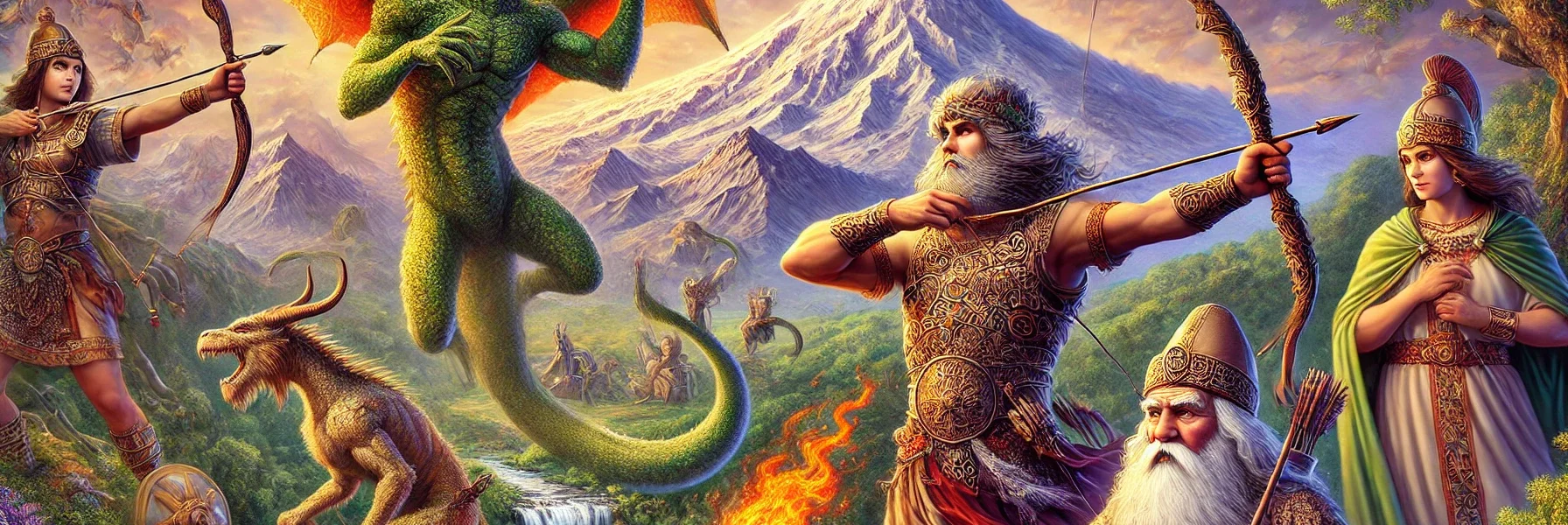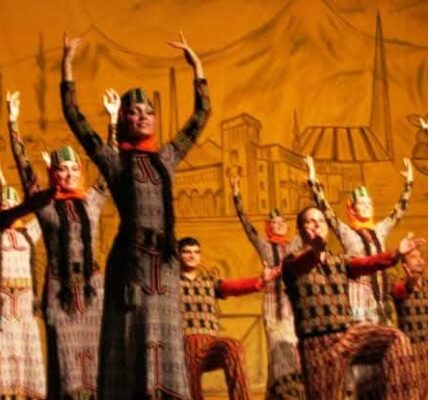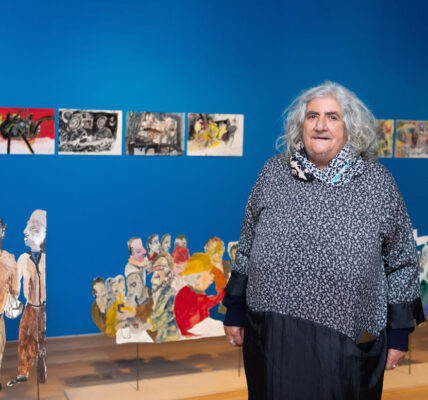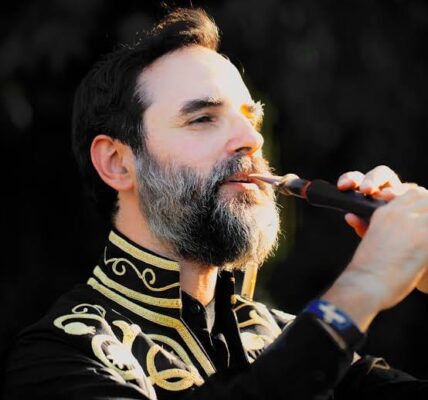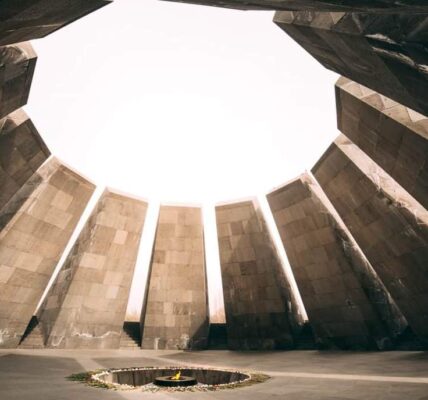Armenia is one of the world’s most ancient nations, dating back more than three millennia as well as its literature. It was the crossroad, homeland of many eastern and western ancient cultures, many religions that already contained mythologies affected its history. A people is reflected in its literature, and this is the truth of Armenians, who maintain close intellectual, spiritual, and emotional belonging to their past and current experiences, Armenians found in their literature an inspiration, a guide, and a reflection of their national life, while armies and rulers shaped their political destinies
If we disregard the pagan literature and the entire oral tradition -with imported ideas from neighboring cultures and migrating peoples-, that were recorded in texts and perpetuated orally by lyre-playing bards, which in turn, preserved by even later writers, the Armenian literature will be dated back about sixteen centuries
Golden age
With the invention of the Armenian alphabet in -the 5th century CE- 405, when the catholicos Isaac (Sahak) the Great and Mashotots formed a school of translators who were reputedly sent to Edessa and to Constantinople to procure and translate Syriac and Greek copies of important works into Armenian, with the support of the king Vramshapuh (A.D. 393-414)
Much of the literature of the 5th century—the golden age of Armenian literature—was dedicated to such translations of original works, such as the histories of Eghishe and Ghazar of Pharp. The masterpiece of classical Armenian writing is the “Refutation of the Sects” by Eznik Koghbatsi, which was critical work, composed partly from Greek sources, in defense of orthodox Christian belief against pagan Armenian superstitions, Iranian dualism, Greek philosophy, and the Marcionite heresy. Translating works of such authors as Saints John Chrysostom and Cyril of Alexandria continued in the 6th–8th century
The Hellenistic (Yunaban) school produced excessively slavish translations from Greek grammatical, theological, and philosophical works, including those of Plato, Aristotle, and Philo of Alexandria
Medieval ages
In the 10th and 11th centuries, which witnessed the maturity of the independent Bagratid kingdom of Armenia, the Artsruni kingdom of Vaspurakan, and the kingdom of Siuniq, Armenian literature, art, and architecture blossomed more than at any time since the 5th century. The principal literary figure of the 10th century was St. Gregory Narekatzi, the first great Armenian poet, renowned for his mystic poems and hymns as well as for such prose works as the Commentary on the Song of Songs. Earlier in the same century, Thomas Artsruni wrote History of the House of Artsruni, which, despite its family bias, is the chief source of information on the history of Armenia to 936; an anonymous writer continued the work to 1121
The History of Armenia by the catholicon (patriarch) John VI Draskhanakertzi is of great value for its account of Arab relations with Armenia, for the author was himself an important participant in the later events he describes. At the turn of the 10th to the 11th century, Bishop Ukhtanes wrote History of Armenia and History of the Schism between the Georgians and Armenians. The beginning of the 11th century witnessed the completion of the reliable and well-written Universal History of Stephanos Asoghik. The History of Armenia by Aristakes Lastivertzi, relating the fall of the Bagratid kingdom, the destruction of Ani, and the victories of the Seljuq Turks, is almost as much a prose elegy as a history
After the political collapse of Greater Armenia and the consequent shift southward of the cultural center to little, or Cilician, Armenia, the literature split into a western and an eastern branch. In both branches, authors began to write in the spoken as well as the classical language. The Mamluk invasion and the invasion by Timur (Tamerlane) ushered in a long period of cultural and literary decline
There were signs in the 17th century that the Armenians were emerging from the cultural decline of the preceding centuries. The deeds of Turkish and Persian overlords figured prominently in histories by Araqel of Tabriz and Zaqaria the Deacon, but there was some contact with Western scholars and works in Latin
Oskan of Erevan (born in 1614 in the newly founded trading colony of New Julfa, Eṣfahān) collaborated with the Dominican Pirandelli and printed the first Armenian Bible in Amsterdam in 1666. From the 13th century, imaginative writing had been represented by a succession of popular troubadours, the most famous of these being Nahapet Kuchak (16th century), one of the rare Armenian poets to sing of physical love; Hovnatan Naghash (1661–1722); and in the 18th century, most famous of all, Sayat-Nova “Aruthin Sayadian”
Modern age
The first fourteen centuries were so crucial to Armenian artistic expression, deal with ancient and medieval times. Due to neglecting translation of the writings, the writers of this period weren’t known out of Armenia, but now they are well-known thanks to the efforts of the scholars who have published serious works of scholarships and competent translations, during the past three decades. As a result, the works of ancient literature have been studied, appreciated, and celebrated in several international colloquies
The 18th century witnessed an Armenian renaissance, by the middle of the 19th century, the time was ready for the development of modern Armenian literature. The Armenian language, was in an anarchic state, as it was divided in both Turkish and Russian Armenia, between champions of the old classical language and those of the modern spoken languages. Finally the latter prevailed, with the result that the eastern literature was written in a modified form of the Yerevan dialect (rusahayeren) and that of the west in a modified form of the dialect of Istanbul (dachgahayeren)
For many of their ideals, Armenian writers looked to Europe. Among western authors, Hakob Paronian and Ervand Otian were outstanding satirical novelists, and Grigor Zohrab wrote realistic short stories; the theatre was best represented by Paronian, whose comedies (such as The Dowry, Master Balthazar, The Oriental Dentist) remain popular
The novel was strongly represented in Russian Armenia, where it became a vehicle for Armenian moral, social, and political goals. For instance, Khachatur Abovean, the “father of modern Armenian literature,” wrote Wounds of Armenia in 1841. Hovhannes Thumanian wrote lyric and narrative poems; and his masterpiece, a short epic, Anush, full of songs that have become traditional, was early adapted as an opera
The speedy decline of Istanbul as the principal western Armenian literary center (after the Armenian Genocide of 1915–16) brought a new slump period in Armenian literature, though Armenians scattered abroad continued to write in Paris, Beirut, and Boston. Some Turkish Armenians fled to the east, where they enjoyed a certain degree of autonomy and where, between 1936 and 1991, national literature was encouraged but controlled by the Soviet state
